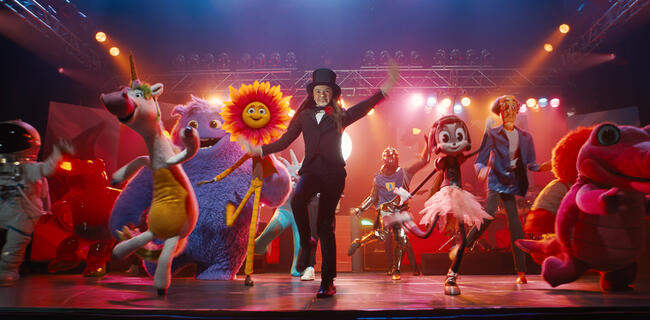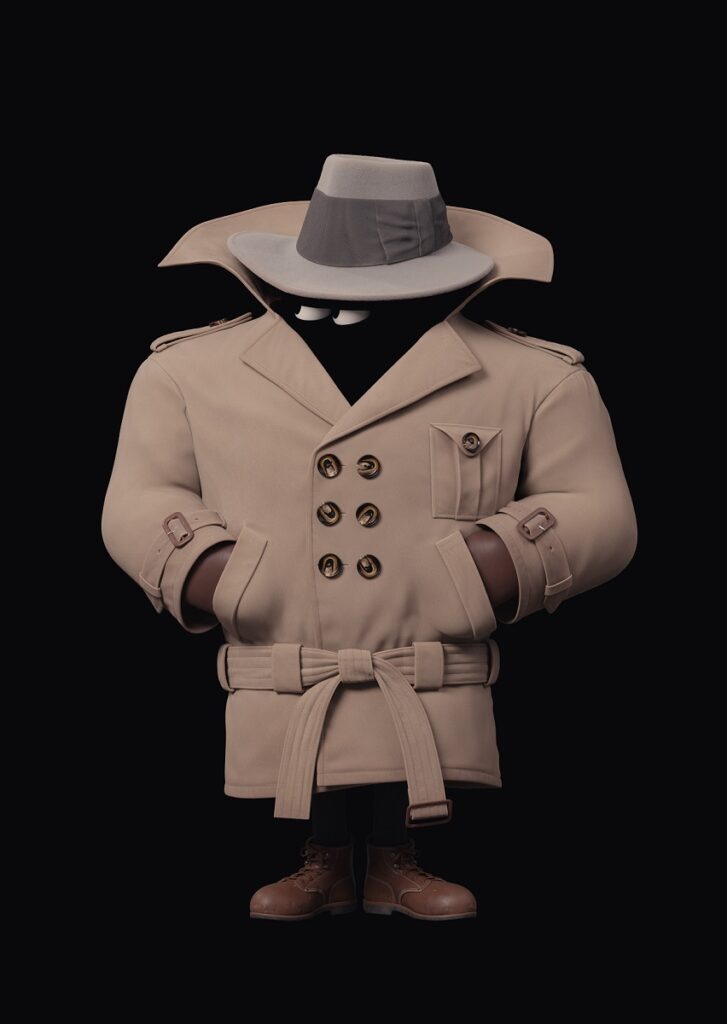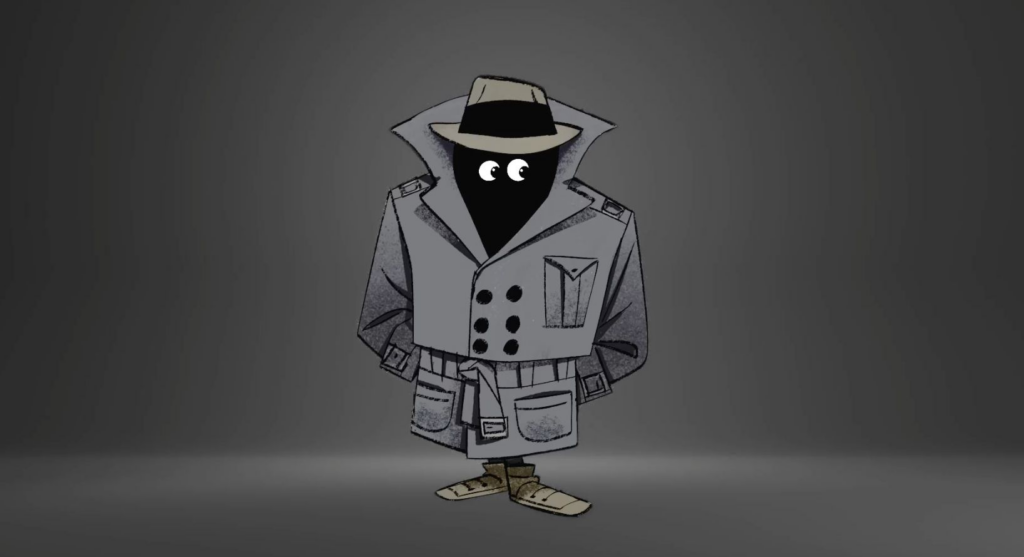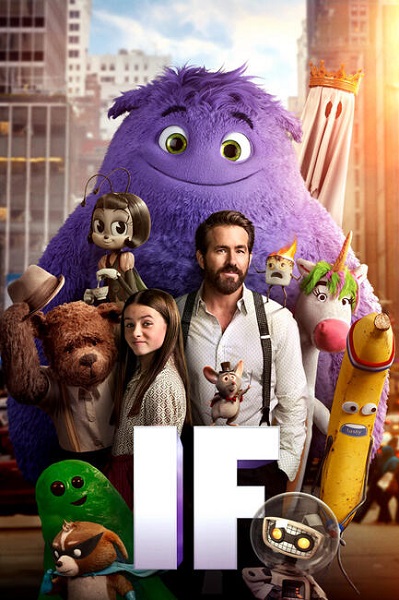Have you met the adorable, cuddly furry giant character ‘Blue’ from John Krasinski’s recently released film IF? Released on 17 May, this live-action/animated fantasy comedy-drama film features an array of imaginary friends in the real world which were brought to life by the visual effects and animation experts at Framestore.
Framestore spearheaded the creation of over 40 unique characters and numerous variants to populate the film’s crowd scenes. With a workforce of about 660 individuals spread across Framestore’s studios in London, Montreal, and Mumbai, the team spent approximately six months developing characters before and during filming. Following this, a few months of ‘postvis’ were followed by a 14-month full animation production phase.
IF revolves around a girl who discovers that she can see everyone’s imaginary friends, embarking on a magical journey to reconnect these ‘IFs’ with their respective children. The film stars Cailey Fleming, Ryan Reynolds, John Krasinski, Fiona Shaw, and the voices of Phoebe Waller-Bridge, Louis Gossett Jr., Steve Carell, and others as the wonderfully unique characters that reflect the incredible power of a child’s imagination.
Ensuring seamless integration into the film’s world alongside human characters was a priority for Framestore’s team, led by production animation supervisor Arslan Elver and production VFX supervisor Chris Lawrence. They meticulously designed animated characters to be tactile and believable, wanting them to feel so real, one could imagine how they smell!
In a detailed interview with Animation Xpress, the duo revealed how they fleeced out these unique characters from scratch and made them a convincing part of the real world, interacting, emoting, and reacting very naturally.
Director’s vision
Director John Krasinski was keen on achieving a perfect blend of live-action performances with the beloved CG characters.
“John was deeply invested in the depth and performance of these characters. He loved the work Arslan and the team had done developing Rocket Raccoon and often cited how Framestore had imbued him with the essence of Bradley Cooper’s performance. So we talked a lot about how to develop that, especially with our leads Blue, Blossom, Lewis, and Cosmo, each presenting unique challenges,” Lawrence shared.
Elver emphasised the importance of authenticity in character design, using the example of Ice, voiced by Bradley Cooper, whose appearance should evoke the craftsmanship of children working with plasticine for its eyes and mouth. “For our hero character, Blue, John wanted every strand of fur to feel touchable and huggable.” Performance-wise, he felt like they were in a live-action Pixar film world.
Intricate details of IFs and human interaction
To make the interaction work, particularly for the hero characters, maintaining the eyeline was crucial for establishing an emotional connection between the actors and the CG characters. “We had stand-ins for our hero characters. For Blue, the stand-in had a backpack for the eyeline (since Blue is about eight feet tall when he stands straight up) and also wore a hula hoop around his waist to indicate Blue’s sheer width on set. This helped us, and more importantly, helped John frame his shots perfectly,” Elver said.
Elver described the early stages of performance development through animation tests, revealing varying levels of complexity among characters. Their physical builds definitely dictated their movement and speed but the most important thing was their personality traits. Elver further mentioned, “For Blue, we used his ears a lot to reflect his emotions, adding complexity to his naive, child-like personality. John’s brief was that Blue is a big guy but not the smartest—child-like naivety was key. Blossom was trickier. Inspired by Fleabag’s Phoebe Waller-Bridge, we infused her with idiosyncratic movements to capture her distinct personality.”
There was a real range of interactions from tender emotional moments to physical comedy. They always had stand-ins or puppeteers in front of the camera for the cast to interact with.
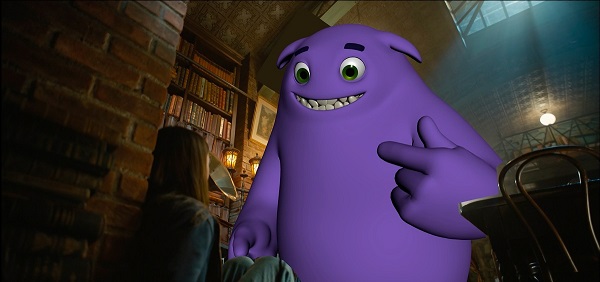
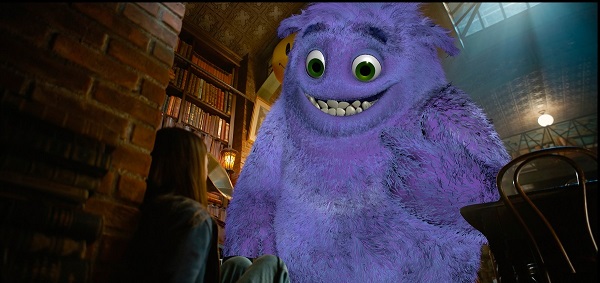
Character development stages
Character development involved tailored approaches for each character. Oscar-winning VFX supervisor Chris Lawrence elaborated on their methods: “For instance with Blue, John came to us with a concept that he loved, and some initial tests. So with him we were able to build him as a 3D rigged model, then quickly pass through Framestore’s visual development team to render so that John would be seeing him in a photographic background and rendered with fur. This let us learn about his shape and silhouette and allowed experimenting with his performance and how much weight to give him.
With Blossom, all we had to start with was a sketch that John liked, so we spent a lot of time making her work in 3D. We did various sculpts and also worked with a very talented 2D animator who did model sheets for us to follow to get her face working. This was essential to keeping all her charm and appeal while staying faithful to the Fleischer inspiration.”
Elver explained the intricacies of developing Cosmo where they had initially depicted him standing in a poised stance and looking around. “In the script, he had to be on Ryan. The team started doing a couple of tests to figure out how he would climb on Ryan, where his feet would be, etc. One thing led to another, and I suggested we forget about physics for him since he’s a spy! This led to a more snappy, out-of-the-blue appearing/disappearing character, which John loved so much that he added shots of Cosmo jumping on Ryan in the scene where Cailey and Ryan are interviewing IFs.”
Innovative techniques used
Lawrence shared that there was a bunch of cutting-edge technology used which was probably most apparent in the visualisation stages. “We had an augmented reality iPad app to show how the IFs would look on set and in locations, and there was an incredibly effective automated rotoscoping pipeline for segmenting the live-action characters so that we could quickly do postvis of entire takes, without waiting for an approved cut from the editor. This was a game changer, as it’s much closer to how live action would work (editing based on performance), so it let the filmmakers edit in a way that was much more natural.”
For the physical interactions, he encouraged Krasinski to “do them physically. Quite often he puppeteered Cosmo and would use him to attack and it was pretty funny.” Later, the artists had to paint him out from the scenes and some of the paintouts were really difficult.
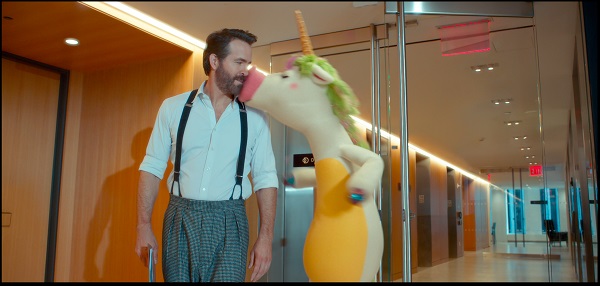
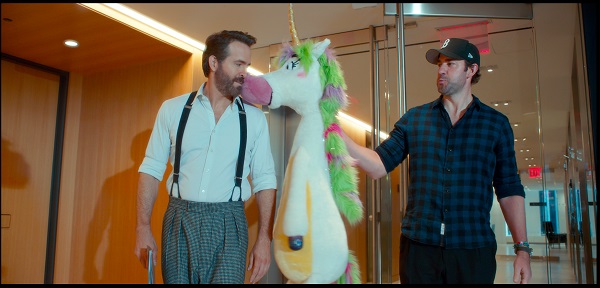
Asked about animation styles and techniques used, Elver shared, “Here at Framestore, we are quite proud of doing full keyframe animation. Everything was handcrafted, including each character. The first time we met John, I remember him saying how much he liked the Christopher Robin characters (Pooh, Piglet, Tigger, etc.) because they felt tangible in terms of both performance and appearance. Tangibility was the key word.”
Animation was done in Maya using Framestore’s proprietary rigs (which varied considerably in approach depending on the character). Rendering was all done in Freak, Framestore’s proprietary renderer.
According to both the experts, each genre be it pure animation, live-action, or a blend of both, has its own set of challenges. However, they feel creating animated characters that can lead live-action films is a unique challenge. The character builds, animation, lighting, integration, character FX, everything needs to be dialed exactly right to create something that can perform next to the actors in a live-action plate. Lawrence concluded by saying, “It truly is the illusion of life at its most challenging.”

